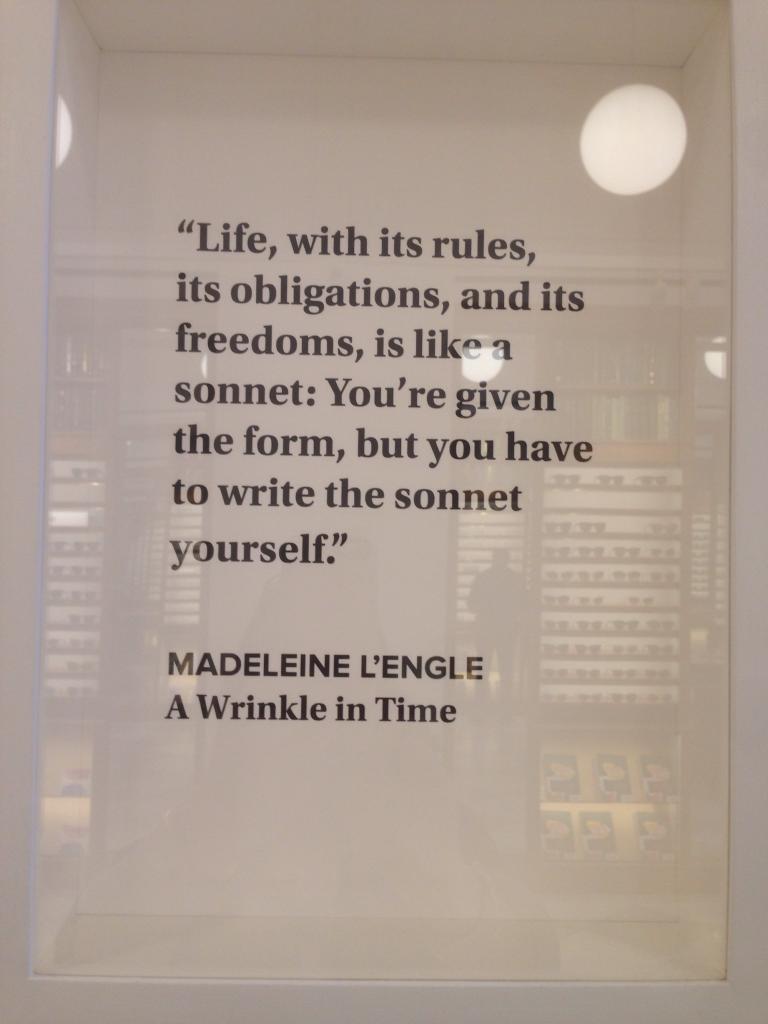So, cut to about 5000 years ago, when we started reading Madeleine L’Engle’s sci-fi masterpiece, A Wrinkle in Time.
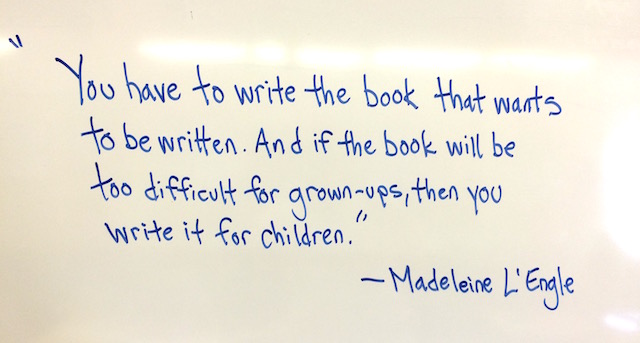
I have been wanting to post something about that experience for many months but was deterred first by the insanity of Term 3, then by summer school, and finally by brain death. But I cannot bear to have scanned all of those index cards for nothing, so here we go…
Our work started where they say it never should: we judged the book by its cover, and made some predictions.
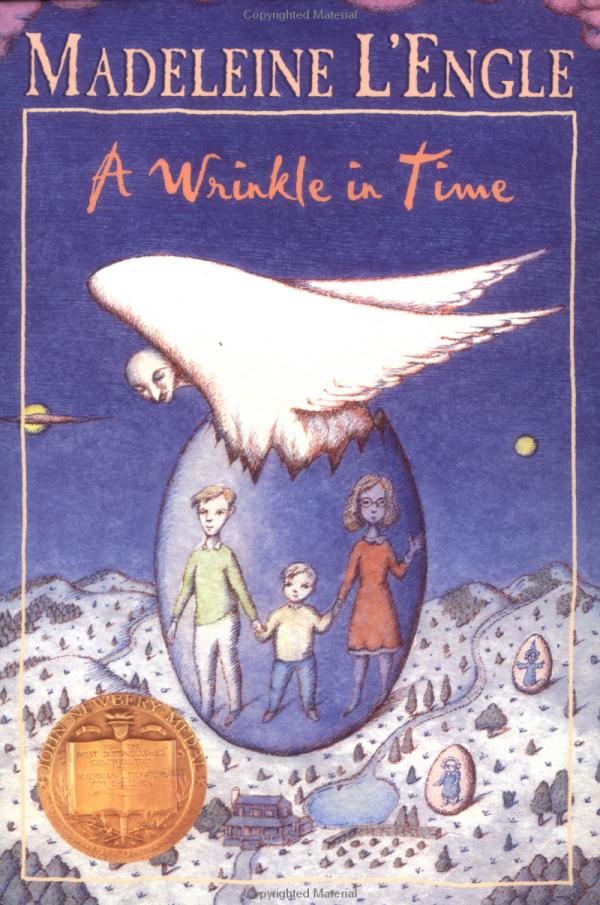
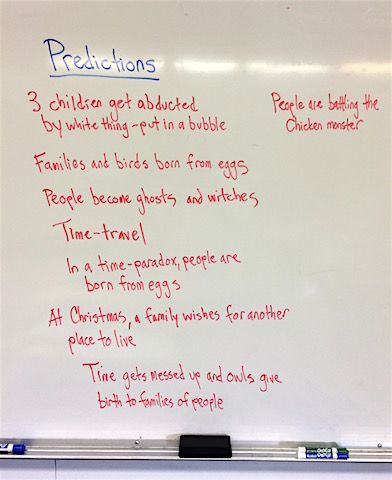
(ps: someone needs to start writing that “People are battling the chicken monster” book, stat…)
Then, we proceeded to read the book aloud, at first, just me, to (hopefully) model proper vocal technique, but then, as we got a couple of chapters in, students volunteered to take on the characters’ voices, and I retreated into the narrative background. In order to prevent a class of voracious readers from reading the entire book in one evening and thus miss out on the collective experience, I snatched the book out of their eager little hands after the end of each chapter, and our actors, as if working with Woody Allen, were only given the chapter they were reading, so that they could look up unknown words and concepts and practice their parts. Our focus here was in reading as if in a radio play: how do you convey the motivation and subtext of the character just with your voice?
On the days of readings, our index card drawings were focused on the previous chapter, in order to re-awaken the story in our heads and to practice identifying key images:
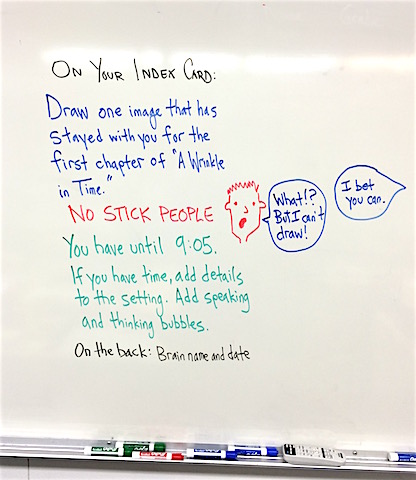
Students had from the second bell to the end of the Listening Program to complete their impromptu drawings; so, depending on when they arrived in class, anywhere from about five minutes to five seconds.
Here are the results (these cards have sat on my home desk for so long that they had the opportunity to be subjected to a coffee spill – sorry for the random stains from about chapter 6 on; Daniel, I think you will agree that this is a waste of perfectly good coffee…):
Chapter One
Chapter Two
Chapter 3
Chapter 4
Chapter 5
Chapter 6
Chapter 7
Chapter 8 – now, either we missed a day, or we combined Chapters 8 and 9, or I have somehow misplaced a set of index cards – in any event, I am horrified to say that there is no Chapter 8!
Chapter 9
Chapter 10
Chapter 11
Chapter 12
I love these cards so much – for the individuality they display and the snapshot they provide into each of your minds, and because the power of L’Engle’s writing is so evident in the images she created in your very non-IT brains – it will be so hard to give them back…
As we read, we also focused on a variety of other activities.
Using Depth and Complexity models as our guide…
![]()
…students worked as a class, in pairs, and finally as individuals, drawing Depth and Complexity prompts from a hat and then applying those prompts as a focus to their reading of each chapter, which gave us a lot of meat for rich class discussions. When writing their response, the focus was on using specific evidence from the text, with proper citation, to bolster their point of view.
We found out about where Madeleine L’Engle wrote…
…and discussed what impact this location may have had on her writing, and explored the idea of having a personal “writing spot” that can feed inspiration, concentration, and creativity.
We also dug into the nature of the tesseract, or hypercube…

…first by trying to make our own…
…and then with the guidance of the words-cannot-properly-describe-him Carl Sagan (thanks for finding the video, Peiyan – we miss you!):
Finally, having completed the book, we began the great work: creating a 3D whole class mural of the novel.
Students were divided into six groups, based on their interest in locations and/or concepts explored in the book. The task was to create a visual representation of this location or concept, using a variety of materials, based on the physical and atmospheric descriptions provided in the text.
The project outline for this work can be found here: a-wrinkle-in-time-mural-criteria
In each group, students were each given a specific job – Chairperson (responsible for making sure the task was completed on time, and for making sure everyone in the group had a voice and contributed to decision-making); Diplomat (responsible for problem-solving in the event of conflict); Materials Manager (responsible for art supply runs and for making sure all group members took part in the clean-up process); and Encourager (responsible for making everyone felt good about her or his contributions). Thanks to help from Mrs. Pitt, the incredible principal of Morley Elementary, these jobs came with helpful language prompts, to help students practice these essential roles.
It was a very messy, very engaging, and very time-intensive task:
The Happy Medium’s Planet, the 2D Planet, and the Tesseract:
The Black Thing, a Dark Planet, and the Death of Mrs. Whatsit (when she was a star):
Camazotz:
Along the way we had plenty of rich conversations and great ethical debates: Can boys and girls be friends? When does conformity harm and when does it help? When do our strengths and our gifts become our weaknesses, and when can our perceived faults help save the day? How do you describe images to beings with no sight? How do you get blue paint out of a dark carpet after it has been walked through and left to dry?
But mostly, we learned how to work together as a class to reach a desired whole, whether it was a shared understanding of a particular nuance in the writing or helping another mural group while you were waiting for an aspect of yours to dry.
I know that some students went on to read other books in the Time Quartet, which is awesome. I myself started to re-read L’Engle’s Austin Family series this summer and am enjoying it just as much as the first and second times, and of course finding new things in it as I go along.
It may seem an odd place to begin our school year, with this look back to work we did last year, but I think/hope it may provide a reminder to our now grade 7s of how much they can accomplish when they work together, and the great joy that reading can bring to our room; and to our new grade 6s, this is the kind of cross-curricular, group-focused work you are about to embark on.
We may also have a productive conversation about priorities, perfectionism (I won’t tell you how long I spent looking for those Chapter 8 index cards, and how much it bugs me that they are not in this post…), and work/life balance, using my spending the last two days of summer break to create this post as a cautionary tale. Was it worth it, or would my time and heart have been better spent fully focused on the US Open? I look forward to your responses…
